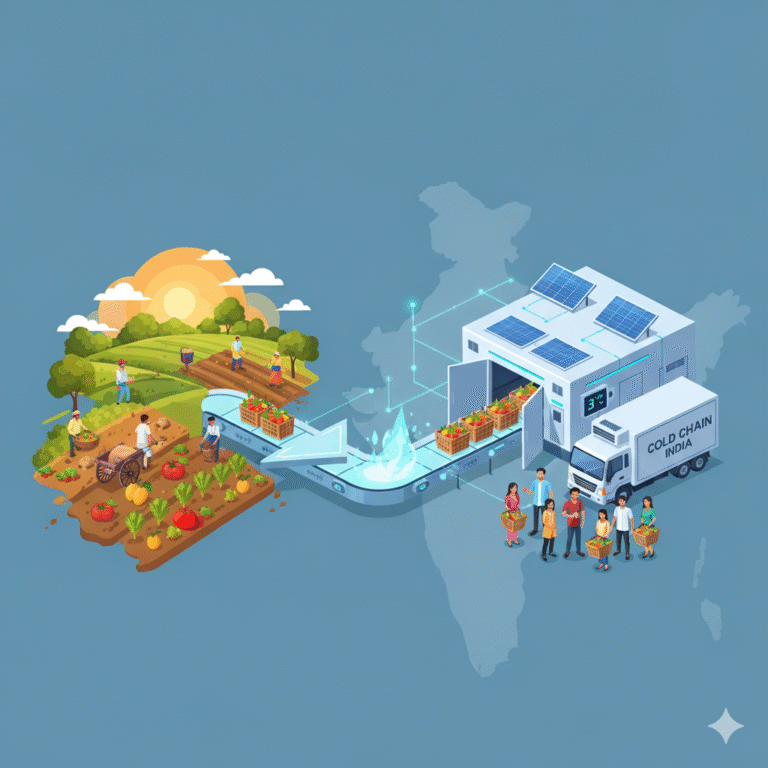India is home to more than 250,000 gram panchayats, serving over 65% of the population. These grassroots governance bodies are crucial for implementing development schemes, ensuring last-mile delivery of services, and giving voice to rural citizens. While Artificial Intelligence (AI) has been making waves in industries, governance, and urban management, its potential at the gram panchayat level is only beginning to be explored. As India strives for digital transformation and inclusive development, AI can emerge as a game-changer for rural empowerment.
This blog explores how AI can strengthen decision-making, improve service delivery, enhance accountability, and empower citizens at the gram panchayat level.
Understanding the Gram Panchayat Ecosystem
What is a Gram Panchayat?
A gram panchayat is the basic unit of local self-government in India’s Panchayati Raj system. It functions at the village level, enabling grassroots democracy and local development planning. Elected members are responsible for implementing government schemes, maintaining public infrastructure, and addressing community issues.
Challenges Faced by Gram Panchayats
- Limited financial and technical resources
- Poor data management and record keeping
- Delayed scheme implementation and fund disbursal
- Lack of transparency and citizen engagement
AI, when deployed strategically, can address these pain points and significantly improve the efficacy of rural governance.
Applications of AI at the Gram Panchayat Level

AI for Data-Driven Decision Making
- Predictive analytics can help gram panchayats forecast resource needs, disaster risks, and health trends.
- Machine learning algorithms can analyze historical data to prioritize schemes or beneficiaries for programs like MGNREGA or PMAY.
Natural Language Processing (NLP) for Language Accessibility
- AI chatbots in regional languages can help villagers access information about schemes, file grievances, and get updates.
- Voice-based AI assistants can assist low-literate populations in navigating digital governance systems.
Smart Agriculture Advisory Systems
- AI-driven platforms can offer personalized crop advisory, pest alerts, and irrigation guidance based on satellite imagery and weather data.
- This can be integrated with panchayat-level farmer outreach programs.
Real-Time Monitoring of Development Projects
- Computer vision and geotagging can monitor infrastructure projects (roads, toilets, schools) in real-time.
- AI-enabled dashboards can flag delays or deviations to local authorities.
Healthcare and Nutrition Monitoring
- AI can assist in predicting malnutrition risks using demographic and health data.
- AI tools can track maternal health, vaccination status, and health worker performance.
Fraud Detection and Financial Transparency
- AI algorithms can detect anomalies in fund utilization or beneficiary data to reduce corruption.
- Blockchain combined with AI can enhance auditability and trust.
Success Stories and Pilot Projects
Andhra Pradesh Real Time Governance (RTG)
The RTG center in AP uses AI and data analytics to monitor service delivery, track grievances, and ensure scheme implementation across rural areas.
Tamil Nadu e-Governance Agency (TNeGA)
TNeGA is piloting AI for land records, beneficiary identification, and service delivery tracking at the village level.
Maharashtra AI-Enabled Agriculture Advisory
Villages in Vidarbha are using AI-based tools for crop disease detection and soil health tracking through mobile apps.
Rajasthan’s Abhay Command Centers
Initially designed for law enforcement, these centers are extending AI-powered surveillance and analytics to rural areas for safety and disaster response.
Barriers to AI Adoption in Rural India
Digital Infrastructure Gaps
- Many villages lack reliable internet connectivity or electricity, essential for running AI tools.
Capacity Building and Digital Literacy
- Panchayat members and rural citizens need training to understand and trust AI systems.
Data Privacy and Ethics
- Handling sensitive health, financial, or biometric data must follow ethical AI and privacy frameworks.
Cost and Scalability
- AI solutions must be cost-effective, scalable, and customized for rural realities.
Policy Recommendations and the Way Forward
Integrating AI in e-Panchayat Mission Mode Project
- The government can expand the e-Panchayat initiative to include AI-driven modules for planning, monitoring, and feedback.
Creating Open Data Ecosystems
- Digitization and anonymized datasets can be made available for AI developers to build rural-centric tools.
Public-Private Partnerships (PPP)
- Collaborations with tech firms, NGOs, and academic institutions can fast-track innovation and deployment.
Capacity Building at the Grassroots
- Launching AI literacy drives for panchayat members, SHGs, and local youth can democratize technology usage.
Localization and Responsible AI
- AI tools must be inclusive, multilingual, and built with community participation. Ethics guidelines must be enforced.
Vision 2047: AI for Rural Resilience
As India marches towards its centenary of independence in 2047, AI offers a rare opportunity to leapfrog rural governance and development. Smart gram panchayats equipped with AI can:
- Deliver citizen-centric services efficiently
- Empower farmers and SHGs with real-time intelligence
- Build resilient communities prepared for climate, health, or economic shocks
This vision aligns with India’s Digital India mission, National Strategy on AI (NITI Aayog), and SDG goals of inclusive development.
Conclusion: Tech with a Human Touch
Artificial Intelligence at the gram panchayat level is not about replacing humans but augmenting their capacity. It is about making technology work for the people who need it the most. With the right intent, infrastructure, and innovation, India can harness AI to uplift its villages and ensure that no citizen is left behind in the digital revolution.








+ There are no comments
Add yours